Recent investigations highlight wide-ranging factors that often have a long history. This includes a lack of role models and mentors and negative attitudes towards flexible working or job-sharing, especially in higher-level positions.
Many earlier women doctors were unmarried and without children. The challenges of combining career progression and caring responsibilities have frequently been identified as key barriers for many women to take on leadership roles.
Annis Gillie joked, "Tolerant husbands…can make the whole difference to availability [for committee work] and success!” When women are the primary caretakers. It can be challenging for them to attend conferences or engage in committee work that often occurs outside of regular working hours. This can have various implications, especially if female doctors take career breaks or change jobs to follow their husbands' promotions.
“The experience of public bodies has proved beyond the necessity for argument the advantage of having women to share in the grave responsibility of forming decisions on such questions.” Jane Walker and Letitia Fairfield, 1933
“I’ve met her once or twice, I’ve been on demonstrations with her shaking my, our fists at, at, at Number 10 Downing Street … she’s magnificent, and enormous respect for her … she was the Chair of the College and [Andrew] Lansley, the then Minister of Health … was going to come and speak to GPs about his, personally, disastrous Bill … and Clare was chairing it. Now Clare is not a very tall person, and Lansley is very tall – he’s way over six foot … and I can remember her looking up at him and saying, “You haven’t answered the question!” [Laughs] Brilliant, I mean, brilliant.” Robert MacGibbon on Clare Gerada
Key dates
1924 Christine Murrell was the first woman to be elected to BMA Council
1964 Annis Gillie was elected the first woman College President, having served as its Chair (1959-62)
1992 Lesley Southgate became the first woman professor of general practice
2010 the first year that women were both College President and Chair simultaneously - Iona Heath and Clare Gerada respectively
People
Find out more about individual women’s experiences by clicking to expand.
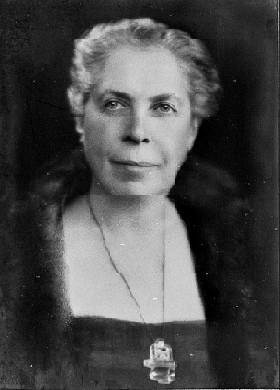
In 1924, Christine Murrell (1874-1933) was the first woman to be elected to the British Medical Association Council. In 1933, she was the first woman to be elected a member of the General Medical Council.
She viewed general practice as her true vocation, and with £1000 from her grandfather, John Rains, she established a joint practice with Honor Bone in Bayswater in 1903. They remained in partnership for 30 years, eventually with four doctors at the practice.
Dr Murrell also lectured in the evenings for organisations, including the London County Council, on subjects such as: Advanced First Aid, Home Nursing, Care of Infants, and the Physiology of Adolescence.
In 1923, she produced Womanhood and Health, aiming to empower women to understand their bodies and health. She also played a vital role in establishing and running the infant consultation service at the St Marylebone Health Society.
As a strong advocate for women’s rights, she supported the suffrage movement via Women’s Social and Political Union membership. She helped to treat hunger strikers on their release from prison. She was heavily involved in the Medical Women’s Federation, serving as its Treasurer and, in 1926, as President.
Christine Murrell was successfully elected to the GMC in September 1933 but died on 18 October before she could take up office.
Image: Dr Christine Murrell, undated. Credit: Wellcome Collection.
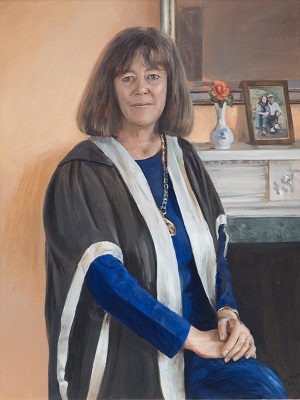
In March 1992, Professor Dame Lesley Southgate was the first woman to be appointed professor of general practice in the United Kingdom at Barts. Now a Professor of Medical Education at St George’s Hospital Medical School, she is known internationally for her work on the assessment of competence and performance of physicians. She became a GP in 1969 and was active in patient care until she became President of the College in 2000.
Women were excluded from British medical degrees until 1882, when Edith Shove and Mary Scharlieb graduated from the University of London. In 1959, Sheila Sherlock became the United Kingdom's first woman professor of medicine at the Royal Free Hospital. In 1963, in Edinburgh, Richard Scott was appointed the world's first professor of general practice.
The 1990s marked a step-change with a number of women being appointed professors in general practice, starting with Lesley Southgate in 1992. She was followed by Ann Louise Kinmonth at Southampton in 1992 and Cambridge in 1997; Debbie Sharp at Bristol in 1994; and Yvonne Carter became the youngest Professor of General Practice and Primary Care in the UK at Barts and the London in 1996.
Today, 45% of senior general practice academics are women. Ten heads of the 44 UK medical schools are women. Three of whom – Professors Joanne Harris, Una Mcleod and Cathy Jackson – have general practice backgrounds. Sarah Purdy, also a GP, is a Pro Vice-Chancellor at the University of Bristol. 2017 saw Professor Sonia Saxena appointed the first Asian female Professor of Primary Care.
Image: Professor Dame Lesley Southgate, Christian Furr, 2003. Credit: RCGP collection/Tamás Kolóti Photography.
Stories
Rocking the College mace, 2018
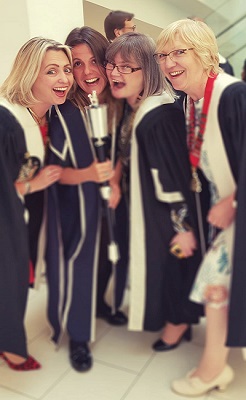
Professor Helen Stokes-Lampard is a GP Principal, Chair of the Academy of Medical Royal Colleges (AoMRC), and Professor of GP Education at the University of Birmingham. She also chairs the National Academy for Social Prescribing.
As Chair of the College (2016-19), Helen had a high media profile with 400+ appearances on TV and radio and 20,000 in printed media. She led major professional gains, including state-backed indemnity for all NHS staff working in the community. Also, the implementation of significant financial and contractual improvements in GPs’ working lives. She also visited members in every Faculty region, energising and encouraging them at some of the darkest times in general practice’s recent professional history.
“I follow in the footsteps of many remarkable female leaders in General Practice, so I never felt the need to aggressively seek to smash glass ceilings. At worst any gender barriers I encountered just required stepping around or at most a metaphorical sharp tap with a stilettoed heel to overcome – by calmly calling out inequity or inviting honest discussion of the issues. Many barriers are magnified by our own interpretation and fear; when we are supported and empowered to tackle them head on, they often melt away. As such I am a massive advocate of supporting others in their own leadership journey – with just a little support and encouragement, so many people, irrespective of gender or any other protected characteristics, can flourish. When it comes to wider systemic challenges of course all leaders have a huge responsibility to face up, own up and tackle them, but when we do so in a collaborative and professionally appropriate way we make genuine progress that can be built upon.”
Image: The College Mace was given by Scottish members in 1969 to mark the award of an honorary MD by Edinburgh University to Dame Annis Gillie who was then President of the College. Prof Helen Stokes-Lampard, Chair RCGP; Dr Carey Lunan, Chair RCGP Scotland; Dr Grainne Doran, Chair RCGP Northern Ireland; Dr Mair Hopkin, Co-Chair RCGP Wales.
An ardent advocate
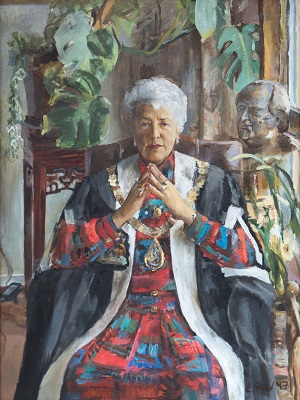
Lotte Newman (1929 -2019) arrived in London in 1938 as an 8-year-old Jewish refugee from Frankfurt, the daughter of two doctors. Following qualification in 1957 and two hospital posts, she joined her father in his Edgware practice before establishing her own practice in West Hampstead. In 1968, it expanded to include the Abbey Medical Centre in St John’s Wood, where she worked for more than 35 years until her retirement in 2005.
Lotte became an RCGP examiner in 1972, was elected to its Council in 1980, and became its second woman president in 1994. She also served as President of the Medical Women’s Federation from 1987 to 1988. She was a member of the General Medical Council, vice-president of the World Association of Family Doctors (WONCA), and medical director of St John Ambulance. She played a key role in establishing the European Society of General Practice and Family Medicine and the European Journal of General Practice.
She was an ardent campaigner for women’s rights. She worked to ensure more women were on College committees, established crèches for College events, and changed meeting times and structures to encourage younger women members to attend.
She had four children in five and a half years, taking only 30 weeks of maternity leave. Her husband, Norman Aronsohn, portrayed in sculptural form in her portrait’s background, was key to her success. She concluded that her achievements were down to “luck, very good support from my family, being prepared to be unpopular at times – and always being at least as well prepared as the men at meetings!”
Image: Lotte Therese Newman, Christian Furr, 1997. Credit: RCGP collection/Tamás Kolóti Photography.
Voices
Listen as Iona Heath reflects on her motivation to stand for College Council, and Robert MacGibbon discusses Iona Heath. In addition, Jacky Hayden reflects on her experience attending meetings, during a witness seminar.
Transcripts
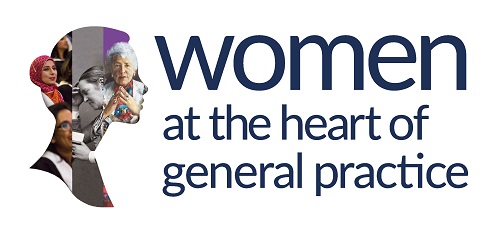
Discover the exhibition
Find out more about the history of women in general practice by visiting our Women in GP exhibition.
Thank you for your feedback. Your response will help improve this page.
